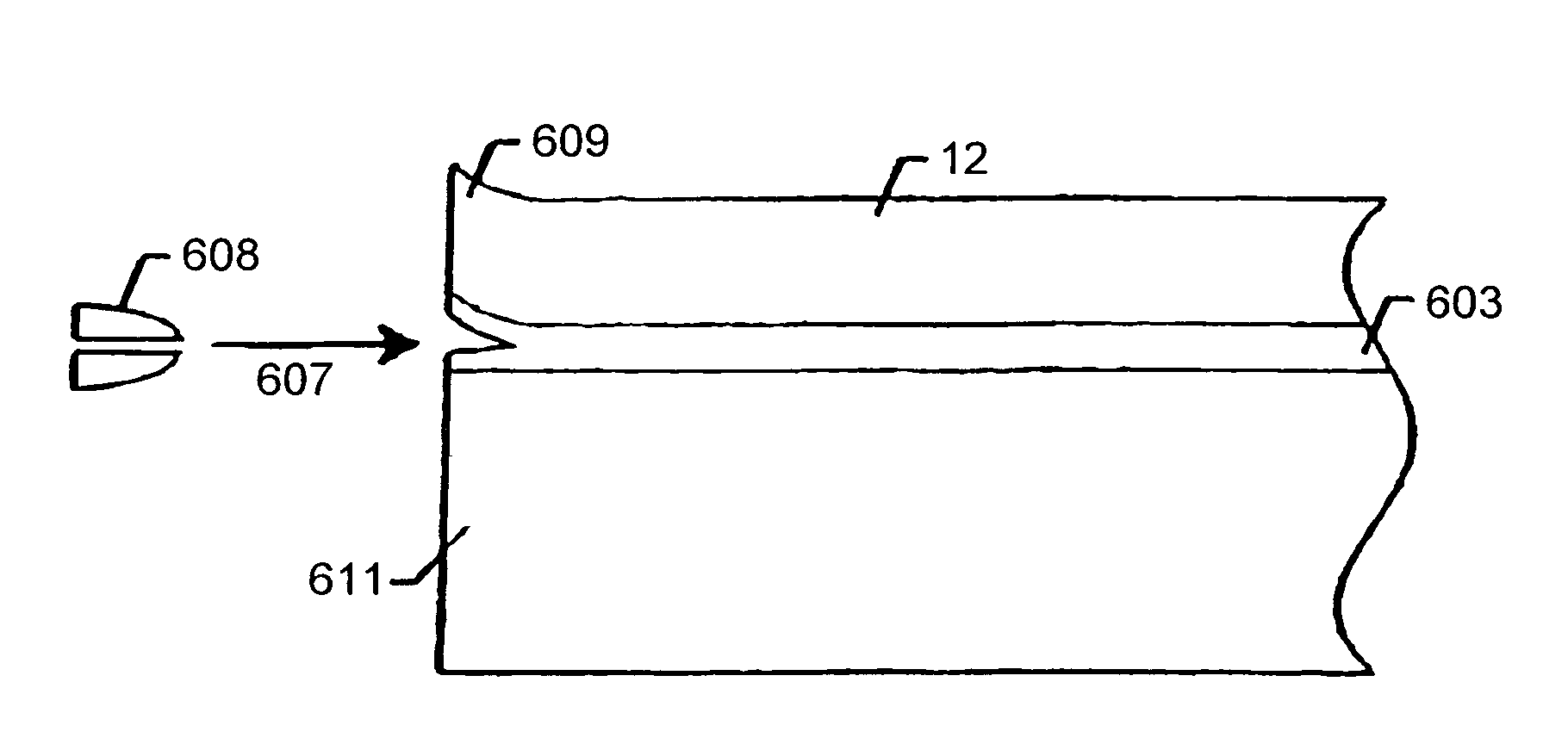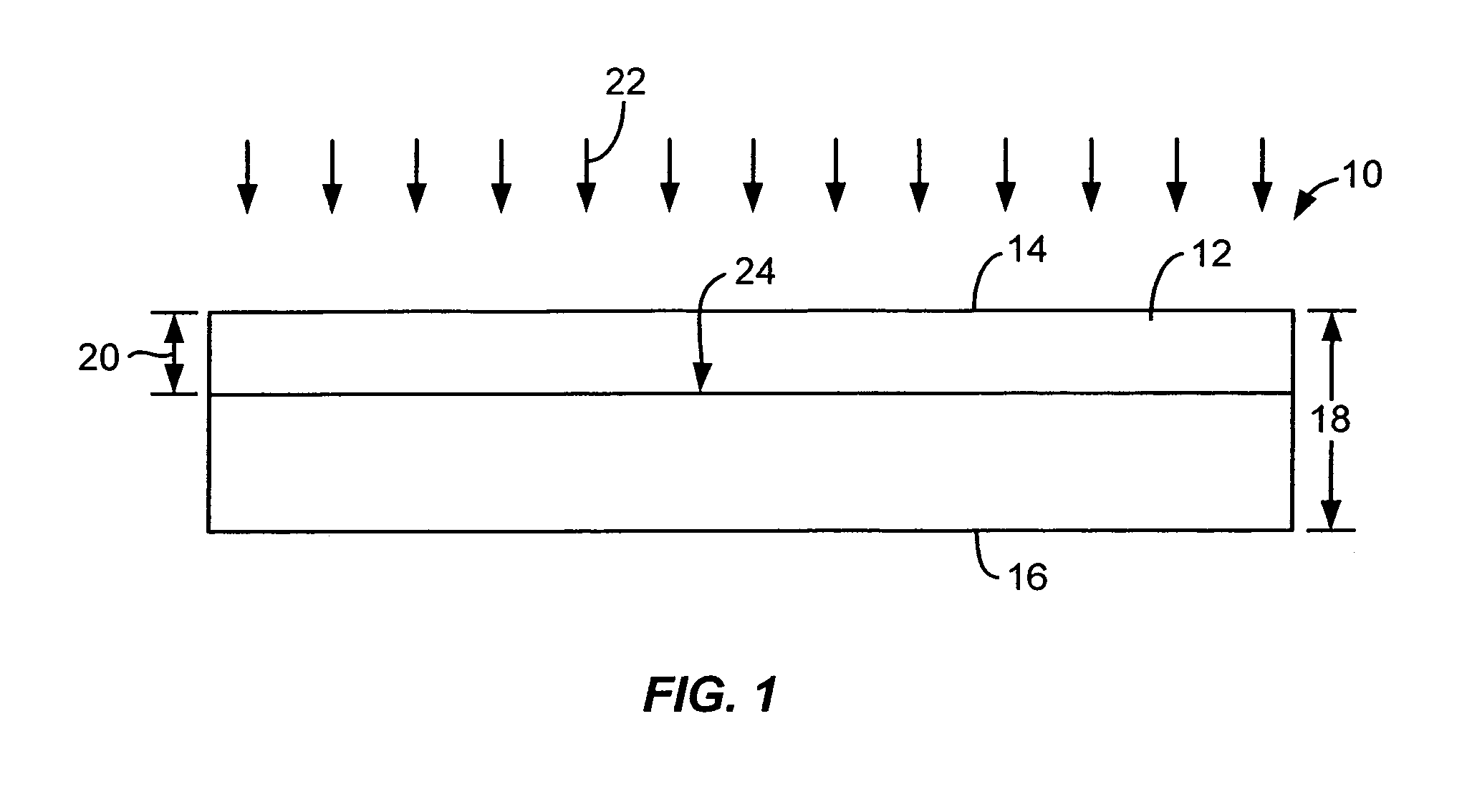Method and device for controlled cleaving process
a technology of controlled cleaving and process, which is applied in the direction of microstructural devices, coatings, microstructures, etc., can solve the problems of difficult separating or cutting extremely hard and/or brittle materials such as diamonds or glass, and cannot be used to provide precision separation in the substrate for the manufacture of fine tools and assemblies,
- Summary
- Abstract
- Description
- Claims
- Application Information
AI Technical Summary
Benefits of technology
Problems solved by technology
Method used
Image
Examples
Embodiment Construction
[0032]The present invention provides a technique for removing a thin film of material from a substrate while preventing a possibility of damage to the thin material film and / or a remaining portion of the substrate. The thin film of material is attached to or can be attached to a target substrate to form, for example, a silicon-on-insulator wafer. The thin film of material can also be used for a variety of other applications. The invention will be better understood by reference to the Figs. and the descriptions below.
[0033]FIG. 1 is a simplified cross-sectional view diagram of a substrate 10 according to the present invention. The diagram is merely an illustration and should not limit the scope of the claims herein. As merely an example, substrate 10 is a silicon wafer which includes a material region 12 to be removed, which is a thin relatively uniform film derived from the substrate material. The silicon wafer 10 includes a top surface 14, a bottom surface 16, and a thickness 18. S...
PUM
| Property | Measurement | Unit |
|---|---|---|
| pressure | aaaaa | aaaaa |
| surface roughness | aaaaa | aaaaa |
| surface roughness | aaaaa | aaaaa |
Abstract
Description
Claims
Application Information
 Login to View More
Login to View More - R&D
- Intellectual Property
- Life Sciences
- Materials
- Tech Scout
- Unparalleled Data Quality
- Higher Quality Content
- 60% Fewer Hallucinations
Browse by: Latest US Patents, China's latest patents, Technical Efficacy Thesaurus, Application Domain, Technology Topic, Popular Technical Reports.
© 2025 PatSnap. All rights reserved.Legal|Privacy policy|Modern Slavery Act Transparency Statement|Sitemap|About US| Contact US: help@patsnap.com



